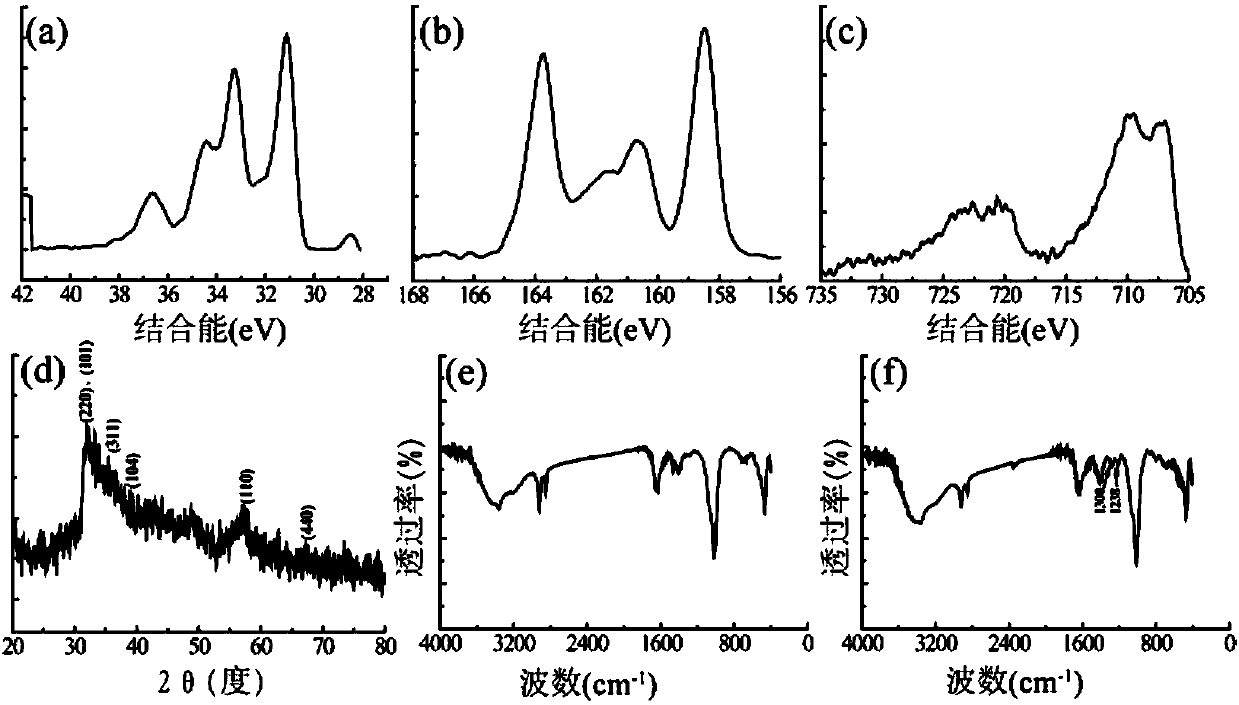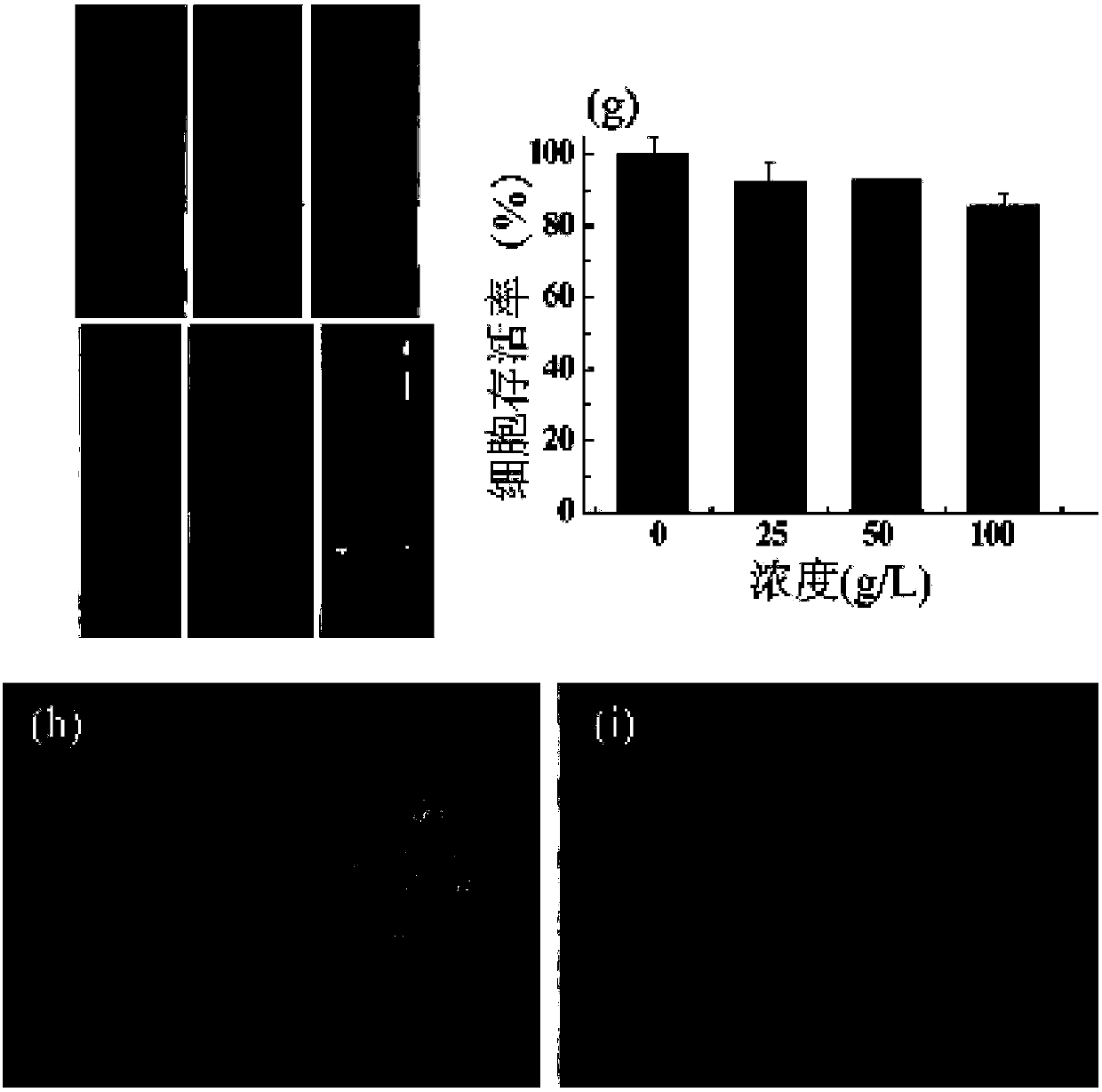Nanocapsules having core-shell structure and preparation method and application thereof
A nanocapsule and core-shell structure technology, applied in nanotechnology, nanomedicine, nanotechnology, etc., to achieve the effects of easy product availability, good colloidal stability, and good photothermal conversion efficiency
- Summary
- Abstract
- Description
- Claims
- Application Information
AI Technical Summary
Problems solved by technology
Method used
Image
Examples
Embodiment 1
[0029] Weigh 0.15 g ammonium tetrathiotungstate, 0.30 g PVP (molecular weight: 360 kDa) and 0.15 g ferric chloride hexahydrate, mix with 30 mL N,N-dimethylformamide, stir at room temperature for 30 minutes to obtain orange solution. The resulting solution was transferred to a 100 mL stainless steel reaction vessel lined with p-polyphenylene and sealed. The reactor was placed in a high-temperature oven for heat treatment at 220 °C for 12 h. After cooling to room temperature naturally, the reaction mixture was centrifuged (12000 r / min, 5 min), washed once and three times with 50% ethanolamine solution and distilled water, respectively. The product Fe 3 o 4 @WS 2 -PVP nanocapsules.
Embodiment 2
[0031] Get the Fe prepared in a little embodiment 1 3 o 4 @WS 2 -PVP nanocapsules, observe the microscopic appearance of the material through TEM: disperse an appropriate amount of nanocapsules in absolute ethanol, and after ultrasonically dispersing evenly, immerse the copper mesh coated with carbon film in the above-mentioned absolute ethanol. After the samples were dried naturally, they were observed and photographed by TEM (the operating voltage of TEM was 200 kV). It can be seen from Figure (1) that the material structure obtained in Example 1 is an elliptical nanocapsule structure composed of a two-dimensional layered structure and zero-dimensional nanoparticles.
Embodiment 3
[0033] Get respectively the Fe prepared in a little embodiment 1 3 o 4 @WS 2 -PVP nanomaterials, analysis of its composition and structure. The valences of W, S and Fe elements in the nanocapsules were characterized by ESCAlab250 X-ray photoelectron spectrometer (XPS) from ThermalScientific. The excitation source is monochromator Al Kα X-rays (λ = 0.8339 nm), the energy is 1486 eV, the line width is 0.9 eV, and the power is 150 W. The binding energy was corrected with the 1s peak of C (284.8 eV). The crystal structure of the XRD diffraction pattern of the nanocapsules was investigated using XRD (Rigaku D / max-2200 PC, Japan). With Cu2Kα rays as the light source, the operating voltage is 40 kV, the current is 200 mA, and the scanning angle (2θ) ranges from 3° to 70°. Characterization of Fe before and after drug loading using FTIR (Nicolet Nexus 670 infrared spectrometer) 3 o 4 @WS 2 -PVP nanocapsule structure, take a little Fe 3 o 4 @WS 2 -PVP and Fe loaded with DOX ...
PUM
| Property | Measurement | Unit |
|---|---|---|
| percent by volume | aaaaa | aaaaa |
Abstract
Description
Claims
Application Information
 Login to View More
Login to View More - R&D
- Intellectual Property
- Life Sciences
- Materials
- Tech Scout
- Unparalleled Data Quality
- Higher Quality Content
- 60% Fewer Hallucinations
Browse by: Latest US Patents, China's latest patents, Technical Efficacy Thesaurus, Application Domain, Technology Topic, Popular Technical Reports.
© 2025 PatSnap. All rights reserved.Legal|Privacy policy|Modern Slavery Act Transparency Statement|Sitemap|About US| Contact US: help@patsnap.com



